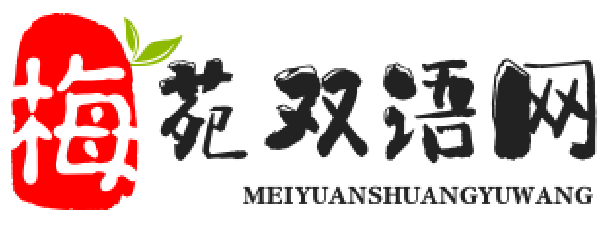- 基础分 (5.5-6.0): 就像一个人五官端正,没有明显缺陷,能正常交流。
- 目标分 (6.5-7.0+): 就像一个人经过精心打扮,气质出众,谈吐不凡,令人印象深刻。
我们的“整容”目标,就是帮你达到后者。

第一阶段:诊断与规划 (术前评估)
在动笔“整容”之前,先要诊断你的“文章”现在处于什么状态。
常见“病症”:
- 结构混乱: 没有清晰的开头、主体段和结尾,论点东一榔头西一棒子。
- 逻辑空洞: 只有观点,没有解释、例子或分析,像“骨架”一样单薄。
- 词汇贫乏: 反复使用 "good", "bad", "important", "many" 等简单词汇,表达单一。
- 语法错误: 句子结构单一,时态、主谓一致等基础语法问题频出。
- 论证无力: 观点过于绝对,或者无法回应题目中的所有方面(如双边讨论类)。
“整容”工具: 找一篇你自己写的,分数不高的作文,或者用一篇范文作为“健康模板”来对比。
第二阶段:核心“整容”手术 (术中操作)
我们将从四个关键部位进行“手术”:结构、逻辑、词汇、语法。
结构重塑:打造黄金框架
一篇高分作文必须有清晰、有逻辑的结构,这是“整容”的骨架。
-
开头段 - 亮眼妆容 (约50-70词)
- 旧貌: "Nowadays, more and more people like to travel. I think it is good."
- 新颜 (三步法):
- 背景引入: 用一句话概括题目背景。 (e.g., The proliferation of international travel has undeniably become a hallmark of the modern era.)
- 问题重述: 用自己的话转述题目。 (e.g., This essay will delve into the multifaceted impacts of this trend, examining both its positive and negative repercussions.)
- thesis statement (中心论点): 清晰、直接地表明你的立场或将要讨论的要点,这是段落的灵魂。
- 同意/不同意类: "While some may argue that excessive tourism can lead to cultural erosion, I firmly believe that its benefits for cultural exchange and economic growth far outweigh the drawbacks."
- 双边讨论类: "This essay will argue that the advantages of international tourism, such as fostering global understanding and boosting local economies, are significant, although the associated environmental and cultural challenges cannot be ignored."
- 利弊分析类: "The consequences of widespread travel are a double-edged sword, presenting opportunities for economic prosperity while simultaneously posing threats to the environment and local traditions."
-
主体段 - 匀称身材 (每段约80-120词,通常2-4段)
- 黄金法则:P.E.E.L. 结构
- P - Point (观点句): 每段开头用一句话清晰陈述本段的核心论点。
- E - Explanation (解释): 用1-2句话解释你的观点,说明“为什么”。
- E - Example (举例): 用具体的例子来支撑你的观点,例子可以是个人经历、社会现象、历史事件、数据等。
- L - Link (链接): 用一句话总结本段,并链接到下一段或回到中心论点。
- 旧貌: "Travel is good. It can make people happy. For example, people can see new things."
- 新颜 (P.E.E.L.示例):
- P (Point): One of the most compelling advantages of traveling is its profound ability to foster cross-cultural understanding and break down stereotypes.
- E (Explanation): When individuals immerse themselves in a new culture, they move beyond superficial media portrayals and gain firsthand insights into different ways of life, values, and perspectives.
- E (Example): For instance, a tourist visiting Japan might initially perceive the culture as strictly formal. However, by interacting with local families, participating in a tea ceremony, or exploring the vibrant youth districts of Tokyo, they realize the rich diversity and dynamism within the society, thus challenging their preconceived notions.
- L (Link): Therefore, personal travel experiences serve as a powerful antidote to prejudice and promote a more tolerant global community.
- 黄金法则:P.E.E.L. 结构
-
结尾段 - 完美收尾 (约40-50词)
- 旧貌: "In conclusion, travel is good. We should travel more."
- 新颜 (三步法):
- 重申观点: 用不同的词汇再次强调你的中心论点。
- 总结要点: 简要概括主体段的几个分论点(不要引入新信息)。
- 升华/展望: 提出一个宏观的展望或建议,让结尾更有力。
- 示例: "In conclusion, while the environmental strain caused by mass tourism is a valid concern, its unparalleled role in promoting cultural empathy and stimulating economic development renders it an overwhelmingly positive force for global society. By fostering more sustainable travel practices, we can continue to reap its immense benefits for generations to come."
逻辑填充:注入灵魂与血肉
有了骨架,我们需要逻辑来连接,让文章“活”起来。
-
使用逻辑连接词: 这是“整容”最立竿见影的方法之一。
- 表转折: However, Nevertheless, On the other hand, While, Despite this
- 表因果: Therefore, Consequently, As a result, Thus, This is mainly because...
- 表递进: Furthermore, Moreover, In addition, Not only... but also...
- 表举例: For example, For instance, A case in point is...
- 表总结: In conclusion, To sum up, Overall, In a nutshell
-
构建论证深度:
- 从“是什么”到“为什么”和“怎么办”: 不要只陈述事实,要分析原因,并提出可能的解决方案或影响。
- 承认对立观点: 在同意/不同意类文章中,先承认对方的合理性("Admittedly, some people argue that..."),然后再用更强的理由反驳,这会让你的论证显得更客观、更有说服力。
词汇升级:换上华服
用词精准、多样是“高级感”的直接体现。
-
替换“高频低质”词:
good-> beneficial, advantageous, positive, valuable, constructivebad-> detrimental, harmful, negative, adverse, problematicmany-> a multitude of, a host of, numerous, a plethora ofimportant-> crucial, vital, significant, essential, pivotalthink-> argue, believe, contend, hold the view that, posit
-
使用更精确的词汇:
- 不要说
people use the internet,可以说individuals leverage the internet for communication and information acquisition。 - 不要说
government should do something,可以说it is the responsibility of the government to implement stringent regulations。
- 不要说
-
注意词汇搭配:
heavy rain(不说strong rain)deeply concerned(不说very concerned)make a decision(不说do a decision)commit a crime(不说do a crime)
语法雕琢:提升气质
复杂且准确的句式能展示你的语言驾驭能力。
-
从简单句到复杂句:
- 简单句: Technology is developing. People's lives are changing.
- 用从句连接: As technology continues to develop, people's lives are undergoing significant changes.
- 用分词短语: Having witnessed the rapid development of technology, we can see that people's lives are changing dramatically.
-
尝试使用高级句式:
- 倒装句: Not only does technology bring convenience, but it also creates new challenges.
- 强调句: It is the government's responsibility that should be emphasized in addressing environmental issues.
- 虚拟语气: Were the government to invest more in public transport, traffic congestion could be alleviated.
-
检查基础语法: 时态、主谓一致、冠词、名词单复数等基础错误是“硬伤”,一定要避免。
第三阶段:术后护理与恢复 (修改与练习)
“整容”手术后,需要精心的术后护理才能达到最佳











